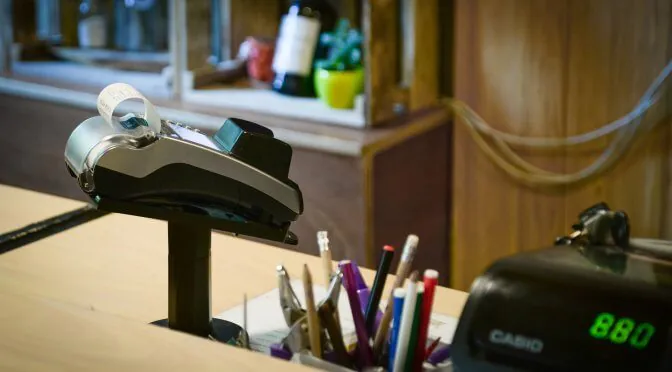Japan has earned a reputation for being a high-tech country, creating some top-of-the-line electronics and demanding the best from their devices and digital experiences. However, there’s one area where the country is behind the curve: cashless transactions.
Neighboring nations South Korea and China are well on their way to making cashless transactions the standard, with China seeing digital transactions make up about two-thirds of all payments, while South Korea is approaching 100% cashless payments. Canada, England, and Australia are all at more than 50%. In contrast, Japan sits at less than 25%.
Why is it so important to switch to cashless transactions?
The Japanese government estimates that it costs around ¥1 trillion (around $9 billion USD) each year to print and transfer bills, maintain ATMs, and pay for related human resources. Handling cash costs Japanese businesses around ¥8.1 trillion ($73.6 billion) per year. The lack of support for cashless payments also discourages foreign tourists, 40% of whom are unhappy when shops only allow cash payments. The government estimates that Japan could lose over ¥1 trillion in potential spending in one year from tourists being unable to pay by card or phone. Japan is therefore working to encourage the transition to cashless transactions, which will also help banks reduce the size of expensive ATM networks.
Arguing with tradition
The Japanese government faces an uphill battle. Physical money is entrenched in Japanese culture, and a large number of citizens and businesses are very opposed to moving to cashless transactions. Among older generations, many aren’t very tech-savvy and don’t want to have to switch away from the familiar. But resistance to cashless payments isn’t restricted to the older section of the population. The rest of Japan isn’t very keen on the idea either.
Cashiers in Japan are extremely adept at handling cash – so much so that cash transactions are faster and less hassle than digital ones. The Japanese also generally see cash as more secure, as they aren’t tied to personal information. There have been a number of security breaches across Japan, making consumers reluctant to exchange cash for digital payment methods. People are also concerned about overspending if they move from cash to cashless transactions. Finally, both consumers and businesses are concerned about the costs involved for stores, particularly small businesses. Not only are there significant setup costs, but there are also transaction fees involved in accepting cashless payments.
The My Number program
Given the challenges involved in moving Japan to a cashless economy, the government has developed a program to incentivise users to adopt cash-free payment methods, as well as to boost usage of the country’s new My Number system. Introduced in 2016, the My Number program was created to simplify administration of social security and tax numbers, but has seen low adoption by citizens due to privacy concerns and a lack of incentivization. The Japanese government therefore announced in September last year that My Number cardholders would receive shopping points worth ¥5,000 (about $50) for making cashless transactions. These points are also intended to provide some relieve for a recent increase in consumption tax from 8% to 10%.
Many corporations have rushed to take advantage of this new program, with 23 cashless payment service providers signing up to participate. These include East Japan Railway Co., SoftBank, Yahoo Japan, and messaging app LINE. SoftBank and Yahoo Japan run QR code payment app PayPay, which saw an increase in membership of 5 million between August and November 2019.
Suggested reading: Top 10 Mobile Payment Companies Leading the Global Mobile Payment Market
The program has had a mixed reception from Japanese citizens. Many people are opposed to the My Number system itself, arguing that it involves non-consensual collection of personal information and is an invasion of privacy, citing multiple data breaches since the program’s launch. Others argue that the system will have a negative impact on vulnerable groups: the poorest and oldest people in the country are subject to the tax increase but are least likely to have credit cards or other methods of cashless transactions, meaning they won’t receive any relief from the tax hike.
However, the point rewards have been successful in encouraging people to increase their usage of cashless payment methods. A recent survey found that more than 86% of respondents intended to keep making cashless transactions after the points rebate ended, with convenience and credit card reward programs incentivising the move away from cash. Credit cards are one of the most popular cashless payment methods, especially among older generations for whom they are easier to obtain. Mobile payments are more popular with younger age groups, who have a higher comfort level with smartphones.
Suggested reading: The Future Trends of Mobile Payment: NFC Payments to Expand its Majority Market Share
The future of cash in Japan
The Japanese government hopes to raise the rate of cashless transactions to 40% by 2025, and eventually get them as high as 80%. While the My Number rebate program has seen some success, the cash tradition is still deeply entrenched in Japanese culture, especially among the older generations. And with Japan’s rapidly aging population, getting that demographic on board will be key to transitioning from cash to cashless. It remains to be seen just how successful the country’s efforts will be, and how long it will take Japan to shift to a cashless economy.
Global Insights at Your Fingertips
Learn more about digital payment systems, PoS terminals, NFC chips and more with Technavio’s market research reports. Discover market trends, challenges, and opportunities and learn about the market’s leaders and up-and-coming players. Try a report for free today!



